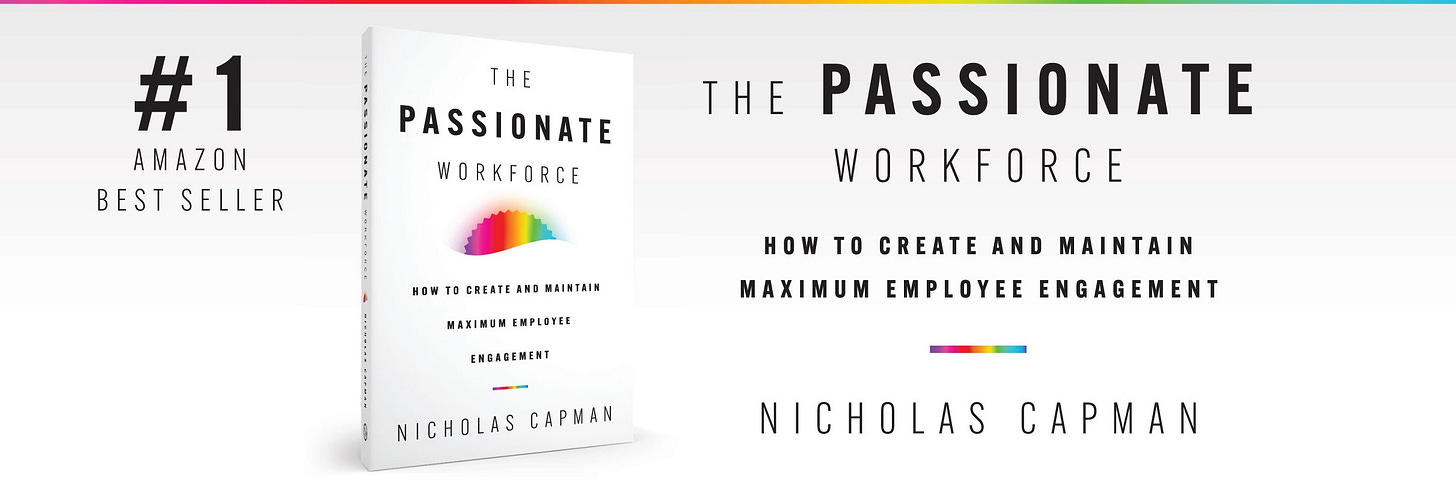This is an episode of The Passionate Workforce Podcast. Subscribe on Apple Podcasts here and grab the bestselling book on Amazon. These conversations are also available on YouTube.
Veteran life sciences leader Henry Kim recently joined Nicholas Capman for a conversation on his Passionate Workforce Podcast that zeroed in on a subtle but corrosive force: conformity bias.
It’s the pressure to “fit in” that can shrink innovation, warp risk perception, and even open the door to ethical disasters. Kim’s 30-plus-year career in product strategy and leadership at Baxter, Cardinal Health–acquired firms, and more has given him a front-row seat to how quickly this bias can undermine good science and sound business judgment.
Below are the biggest takeaways from their discussion, distilled for busy leaders who want practical ways to spot and stop conformity bias before it stalls performance, or worse.
Henry is a medtech executive and product strategist with over two decades of experience transforming breakthrough ideas into commercial realities.
As the Principal Owner of KNEXT Consulting, he advises private equity firms, venture investors, and start-ups on growth strategies, product development, and market entry. Most recently, he served as fractional CMO/CPO at Quality Means Business, where he led product definition and go-to-market planning for the AI-powered regulatory platform QualiVerse®.
Earlier, Henry built and scaled high-performance teams as Senior VP of Product at Dimension Inx, co-founded the commercialization consultancy StrataMed Solutions, and drove strategic growth initiatives at STERIS and Cardinal Health.
His career began in product marketing and development at Baxter, Biomet, Synthes (now DePuy Synthes), and Hill-Rom, giving him deep expertise across medical devices, orthopedics, regenerative medicine, and SaaS.
Key insights from the discussion:
Conformity bias thrives on silence and speed. Kim defines it as the “alignment of beliefs, behaviors, and decisions within a group” driven by social pressure not to “rock the boat.” When dissent is suppressed, creativity plummets, decisions are made with incomplete data, and ethical blind spots appear.
Psychological safety is the antidote. Teams need explicit “safe zones” where dissenting ideas are welcomed and debated without fear of backlash. Without that foundation, innovation stalls and risk goes unseen.
Leaders: speak last, not first. When the most senior voice opens a meeting, others often self-censor. Train yourself to gather the room’s ideas before voicing your own—it both surfaces better thinking and lets contributors keep the credit.
Diagnose the bias early. Warning signs include lightning-fast consensus, few questions, and no challenges to assumptions or data interpretations. Ask: Who haven’t we heard from? What risks are we ignoring?
Simple tactics beat fancy tools. Kim’s favorite low-tech fix: simultaneous thumbs-up/thumbs-down voting before debate, followed by a round-robin “tell us why.” It evens the playing field and draws out overlooked perspectives.
Remember the ethical stakes. Kim recounts seeing conformity bias fuel unsanctioned trials that harmed patients, and he and Capman cite Theranos as a cautionary tale of crushed dissent and manipulated data.
Assume you’re biased—and say so aloud. Openly acknowledging your own blind spots invites your team to challenge you and keeps data—not hierarchy—at the center of decisions.
Practical next steps
Retrospectives and post-mortems: Review past decisions for signs of rushed agreement or missing data.
Ground rules and frameworks: Establish decision criteria that include explicit risk reviews and diverse input.
Ongoing learning: Nick recommends Dare to Lead by Brené Brown and Radical Candor by Kim Scott to deepen skills in candor and courageous conversation.
For leaders looking to take this even further, Nick Capman’s book The Passionate Workforce: How to Create and Maintain Maximum Employee Engagement expands on creating high-trust cultures where ideas—and people—can thrive. (He’s up-front about the bias, but it’s a worthwhile read!)
Drawing from practical strategies, real-world examples, and proven methods, Nick provides actionable insights for leaders at every level. Whether you're refining your leadership style, implementing engagement initiatives, or preparing your team for the future, this Amazon #1 bestseller equips you with the tools to transform your organization from the inside out.
If you haven’t picked up a copy yet, it’s an invaluable resource for any leader serious about maximizing employee engagement and creating a workplace where passion and performance are inextricably linked. Grab your copy on Amazon
The FDA Group helps life science organizations rapidly access the industry's best consultants, contractors, and candidates.
Need expert help planning and executing compliance projects or connecting with a quality and compliance professional? Get in touch with us. If we haven’t worked together yet, watch our explainer video below or head to our company introduction page to see if we could help you execute your projects now or in the future.
Our service areas:
Quality Assurance | Regulatory Affairs | Clinical Operations | Commissioning, Qualification, and Validation | Chemistry, Manufacturing, and Controls (CMC) | Pharmacovigilance | Expert Witness
Our engagement models:
Consulting Projects | Staff Augmentation | FTE Recruitment
Our podcast:
Apple | Spotify | YouTube | Web + Others







Share this post